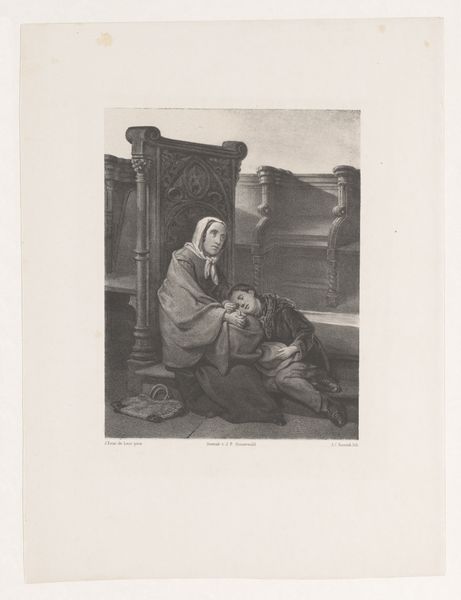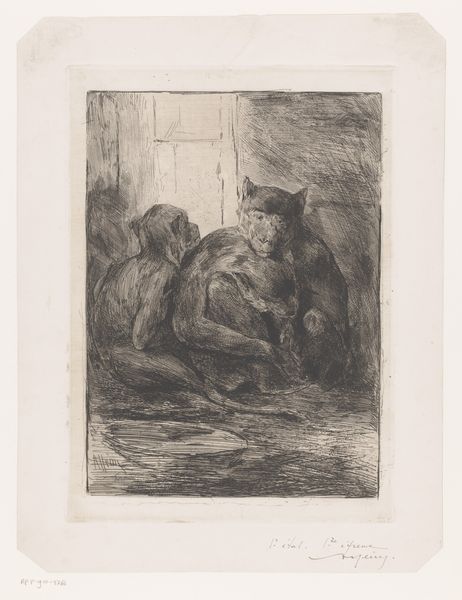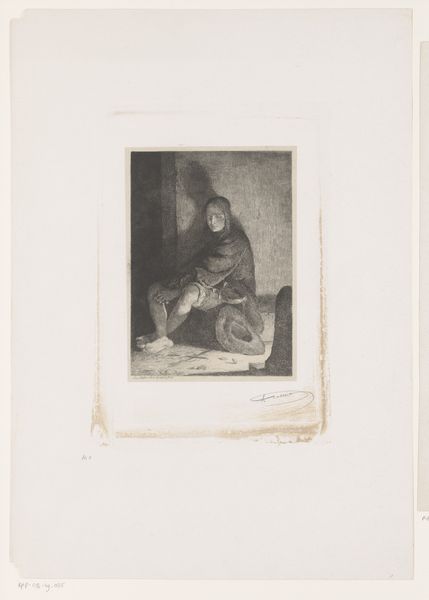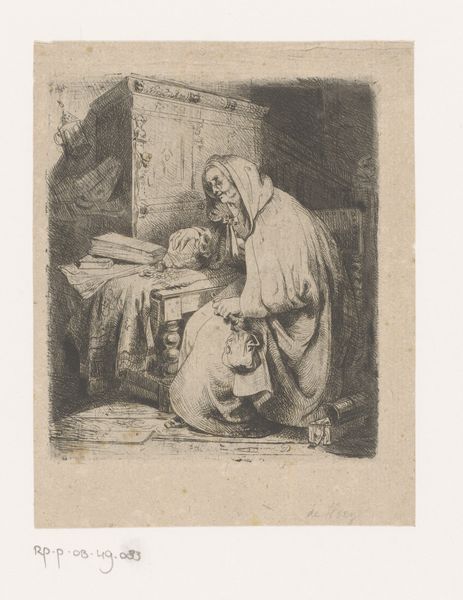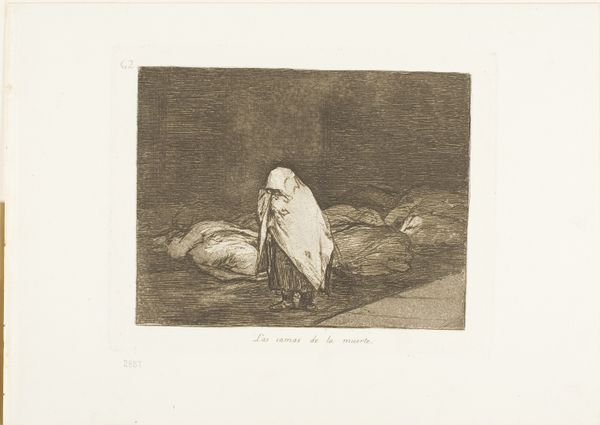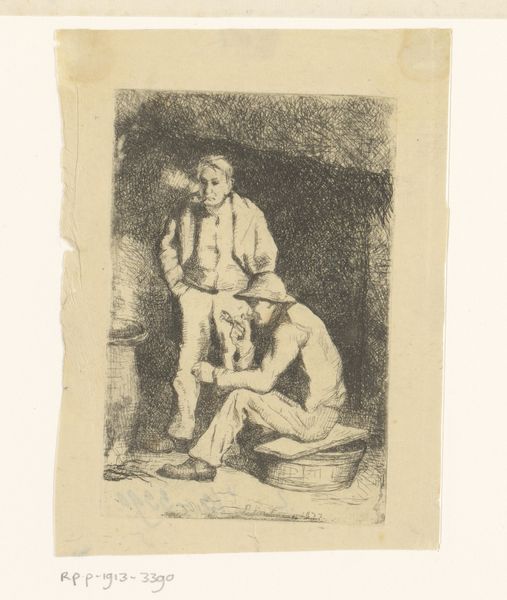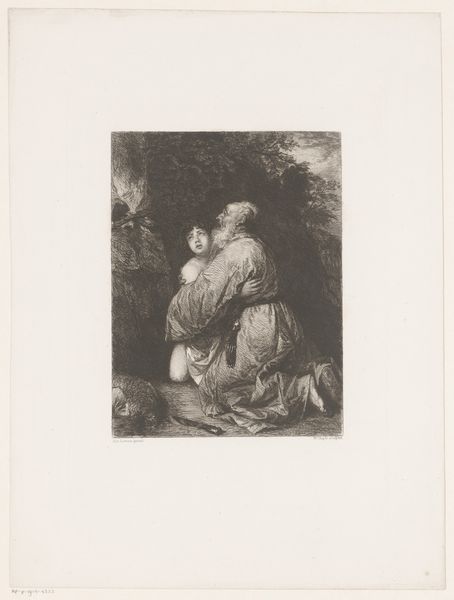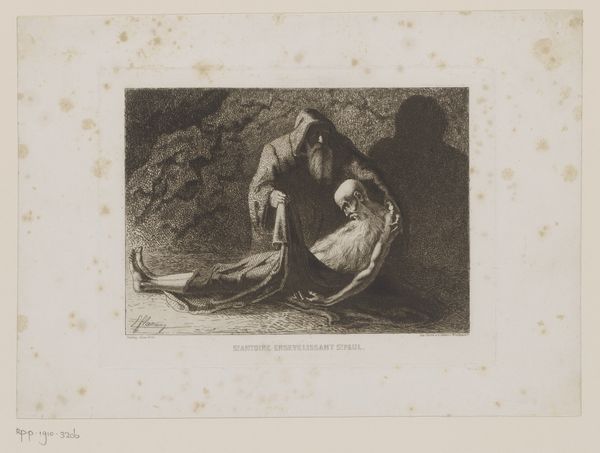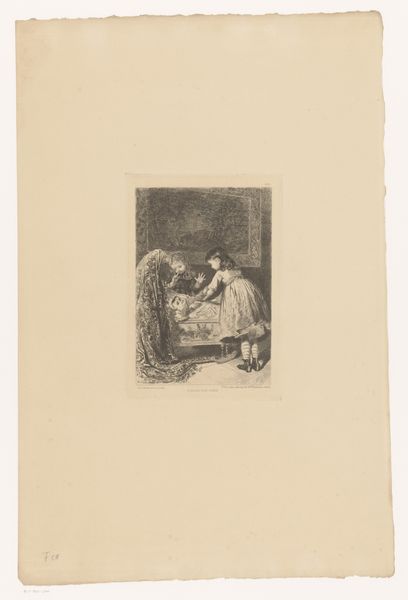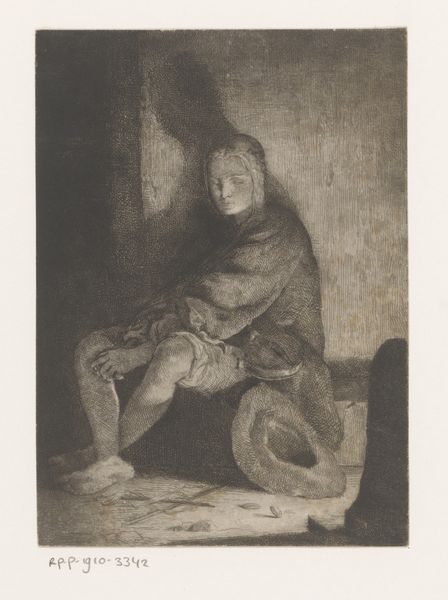
etching, engraving
#
portrait
#
baroque
#
etching
#
figuration
#
genre-painting
#
history-painting
#
engraving
Dimensions: height 129 mm, width 125 mm
Copyright: Rijks Museum: Open Domain
Curator: Here we have Bernard Picart's etching and engraving, made sometime between 1723 and 1733, titled "Pero zoogt de geketende Cimon in de gevangenis." Quite a mouthful, isn't it? Editor: It is! But more strikingly, there's a starkness to the scene. The confined space, the heavy shading, and the intimate encounter all contribute to a really powerful, almost unsettling atmosphere. It makes you wonder about the relationship here and the situation causing it. Curator: The piece illustrates a tale of Roman Charity. Cimon, condemned to death by starvation, is kept alive by his daughter, Pero, who secretly breastfeeds him during her prison visits. You feel that weight of their circumstance, right? Editor: Absolutely. It directly confronts patriarchal authority through the nurturing figure of Pero. I can't help but read this as a challenge to traditional power structures, using the female body as an emblem of subversive compassion. Curator: Mmm, the act of defiance as sustenance. I find myself pondering Pero's face most. It’s hard to tell, is that determination or a deeper sorrow? It hangs there in the details etched into the veil... Editor: The engraving’s baroque sensibility amplifies that sentiment with high emotional charge, emphasizing the precarious nature of their actions and lives in the process. We might even view it as a historical commentary on gender roles and class inequality that continues to hold relevance. Curator: It truly is interesting how these very old tales told through art never lose their sting. We find ourselves moved and thinking about things that are here, present with us still. Editor: Exactly, which speaks to the power of images like these to make visible some really old and pervasive power dynamics—and acts of resistance—in human societies.
Comments
No comments
Be the first to comment and join the conversation on the ultimate creative platform.
